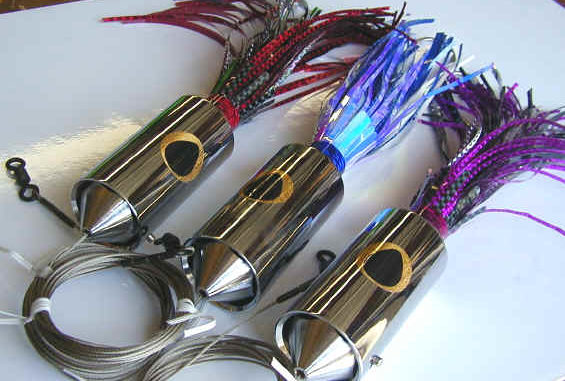
Traditional bluewater trolling methods, gear and lure selection rarely allow for trolling speeds over eight to 10 knots. But wahoo will often be on the move traveling along a rip or just moving from place to place. Often, bluewater fishermen will fish an area for a while, and then move 20 miles away in hopes of running into a concentration of wahoo. Capt. Jim Bowen of Little River’s Lowcountry Fishing Charters will troll high-speed lures while moving from place to place and has great successes in the process. He believes she should be fishing and covering ground at the same time.
Bowen’s plans his bluewater trips around a target area determined by checking satellite imagery and sea surface temperature charts. With currents shifting, he typically runs to his intended area, but he stops 10 to 15 miles short and start high-speed trolling at 15 to 18 knots, hoping to find fish along the way.
“It’s a great method to find fish and maximize your fishing time,” Bowen said. “We will slow down and put the (ballyhoo) out when we hook up on a fish at high speed.”
High-speed trolling allows Bowen to search for the temperature breaks and rips while keeping his baits in the water, and with wahoo, that’s especially important. A migratory, pelagic fish, they will sometimes travel thousands of miles each year, staying close to a rich food source and staying in their preferred temperature range. Their daily travels sometimes carry them great distances, so covering water with baits greatly increases a fisherman’s chances for success.
Bowen relies on lures designed especially for high-speed trolling by California’s Ballyhood Top Gun Lures. He prefers the 48-ounce Banchee Supreme and the 14-ounce Wahoo Express in different colors. He usually deploys two lines while high-speed trolling, using a 48-ounce trolling weight on one line and a 32-ounce weight on the other. Due to the size and weight of the lures, rigging and weights, he uses heavy-duty, Penn International 50-Wide reels and 50- to 80-pound bent-butt rods.
Even at these sizes, the lures have a tendency to approach or break the water’s surface.
“We use release clips attached to the stern to help keep the lures in the water,” he said.
As the fish hits, Bowen maintains his speed to make sure the fish stays hooked. These fish are so fast, any reduction in speed will allow the fish to spit the hook and disappoint an anxious angler.
“These fish are so fast and their mouths open up so big, you need to keep the boat moving fast,” he said. “The worst thing you can do is slow down the boat; (that’s) a good way to lose a wahoo.”




Be the first to comment